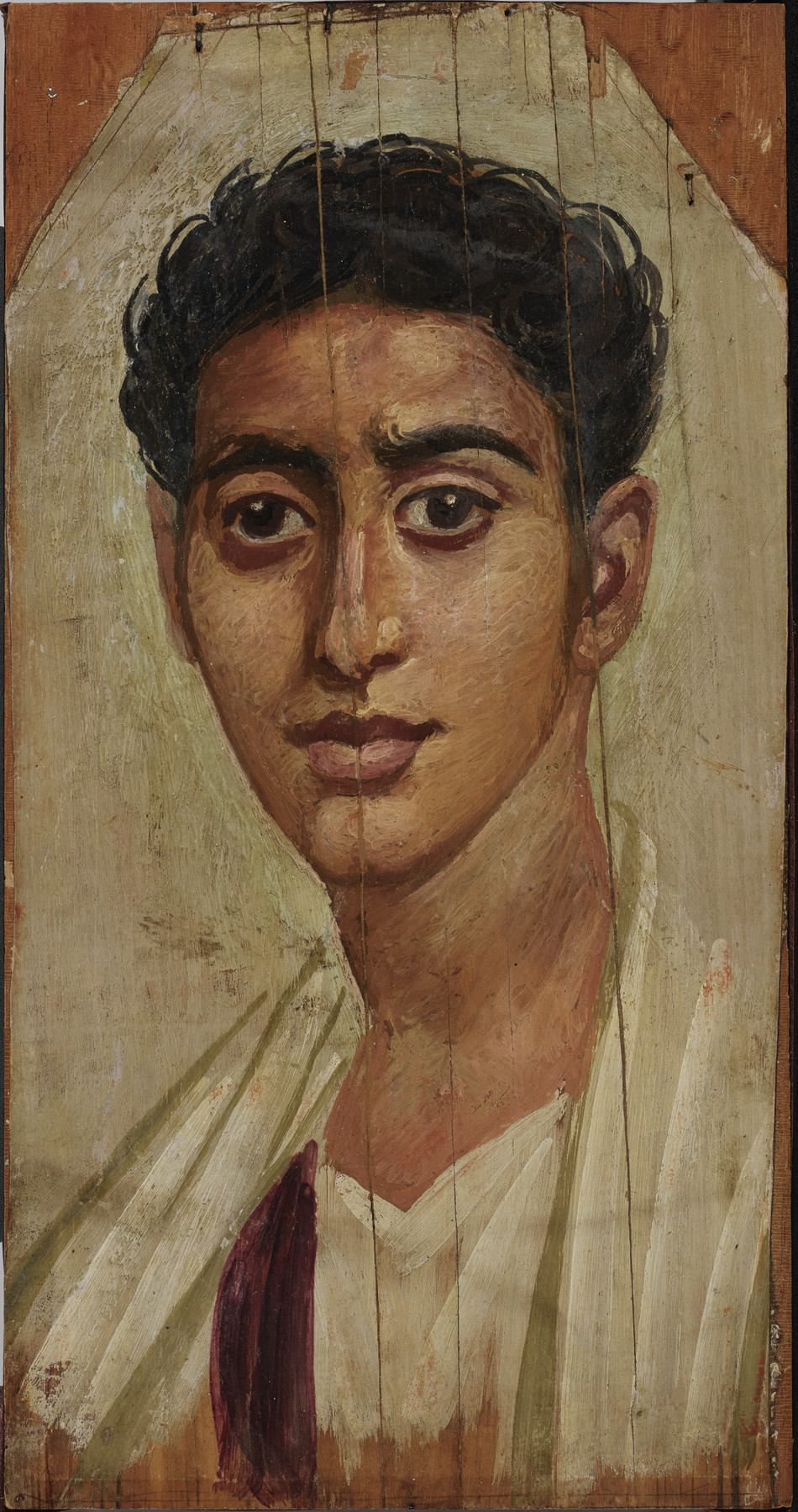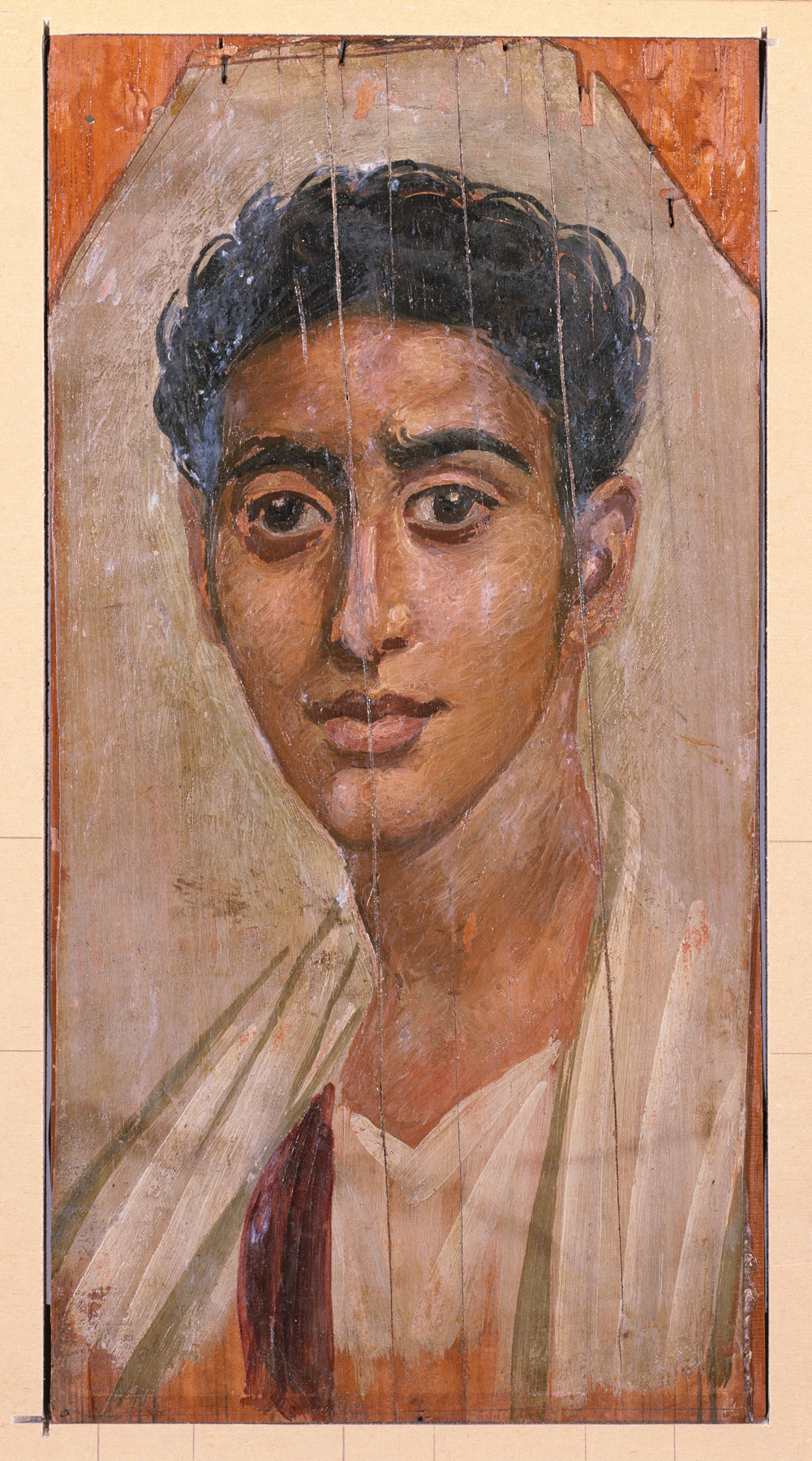Panel Portrait of a Man
(Roman Empire )
In Roman Egypt (30 BCE-324 CE), artists adapted naturalistic painting styles to the ancient custom of making portrait masks for mummies. The portraits were often painted while the subject was in the prime of life and were hung in the home until the person's death. This practice continued in northern Egypt well into the Early Byzantine period.
Provenance
Provenance (from the French provenir, 'to come from/forth') is the chronology of the ownership, custody, or location of a historical object. Learn more about provenance at the Walters.
Excavated by Petrie, 25 Feb. 1888 at Hawara [later referred to as no. T]; H. Martyn Kennard, London, [date of acquisition unknown], by purchase; Sale, Sotheby's, London, July 16, 1912, lot 541; Henry Walters, Baltimore, 1913, [mode of acquisition unknown]; Walters Art Museum, 1931, by bequest.
Exhibitions
| 2019-2021 | Excursions through the Collection: Portraiture, Adornment, and the Natural World. |
| 2013-2014 | Egypt’s Mysterious Book of the Faiyum. The Walters Art Museum, Baltimore. |
| 1989 | Beyond the Pharaohs: Egypt and the Copts in the Second to Seventh Centuries A.D.. Museum of Art, Rhode Island School of Design, Providence; The Walters Art Gallery, Baltimore. |
| 1967 | Mummy Portraits from Roman Egypt. The Detroit Institute of Arts, Detroit. |
Conservation
| Date | Description | Narrative |
|---|---|---|
| 12/8/1966 | Treatment | stabilized; coated; re-housed |
| 7/6/2017 | Examination | examined for technical study |
Geographies
Egypt, Faiyum (Place of Origin)
Measurements
H: 15 1/2 x W: 8 1/16 in. (39.4 x 20.5 cm)
Credit Line
Acquired by Henry Walters, 1913
Location in Museum
Accession Number
In libraries, galleries, museums, and archives, an accession number is a unique identifier assigned to each object in the collection.
In libraries, galleries, museums, and archives, an accession number is a unique identifier assigned to each object in the collection.
32.3






